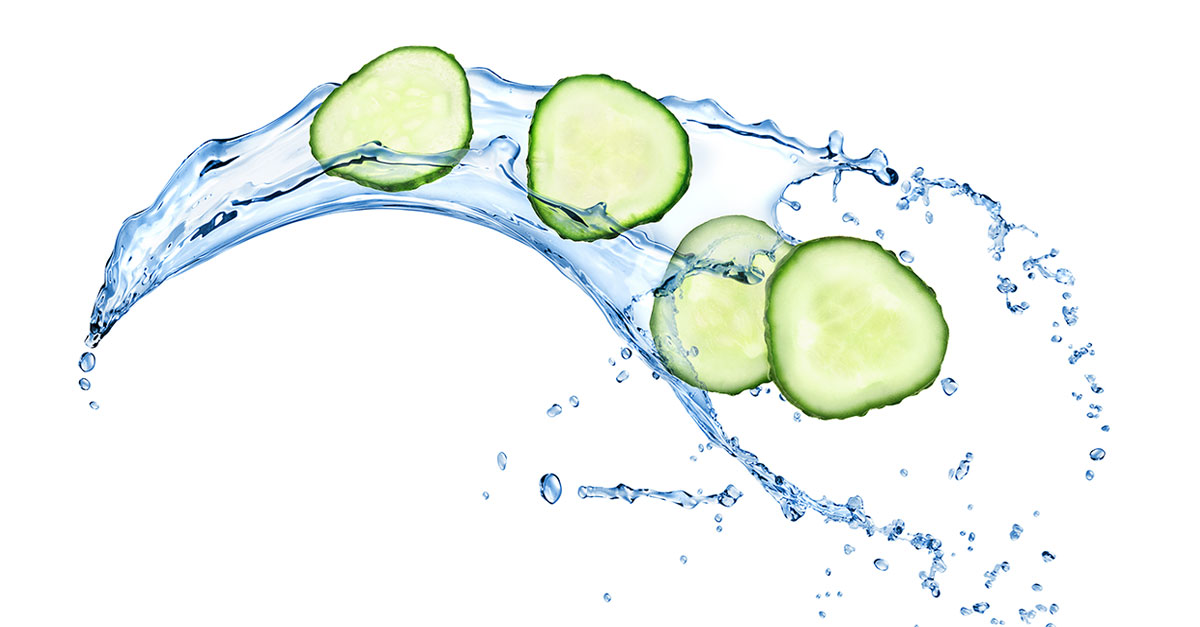The mantra “Drink more water!” is heard so often that it seems like an obvious truth. Of course we should all drink water—preferably eight full glasses a day. Right?
Not so fast. It’s true that many Americans don’t drink enough water. According to some estimates, dehydration is a problem for up to 75% of adults. But chugging more water from the tap (or from an overpriced plastic bottle) is not the best way to stay hydrated.
New thinking: The water that you get from foods is more hydrating than “liquid” water. This gel-like form of water is about 10% more viscous than liquid water. Found inside all living cells, gel water moistens tissues better than liquid water…and contains more electrolytes, which enhance bodily functions.
What does this mean in practical terms? Simply put, eating your water is healthier than drinking it.
A HEALTHIER “DRINK”
Plant foods typically contain between 80% and 98% water, by volume. The electrolytes mean that gel water isn’t merely moisturizing…it’s a fuel that improves cognition, judgment and mood.
Of course, you still need liquid water. In fact, if you don’t replenish the amount of fluid typically lost through sweating, urination and other bodily functions, it can cause a measurable loss of cognitive abilities…a decrease in the ability of blood vessels to contract/dilate…and an increase in cellular inflammation. But gel water does an even better job at keeping you hydrated.
HOW TO GET MORE
Instead of relying on liquid water alone, I recommend four steps that incorporate diet and exercise for healthful hydration. To help stay properly hydrated…
STEP #1: Drink two green, veggie-based smoothies a day. Even one smoothie (at least eight ounces) will increase hydration and improve energy, but two are ideal. Why vegetable-based smoothies? Because the gel water facilitates absorption by cell membranes…the fiber clears out toxins and cellular wastes…and the minerals (including natural sodium) improve hydration as well as flavor.
You can make a smoothie with virtually any combination of green vegetables, with a little fruit for flavor.
My favorite hydrating smoothie recipe: Blend at least one leafy green (such as spinach or kale)…a bit of apple, banana or carrot for sweetness…lime juice or apple cider vinegar if you like a little zing…herbs (such as parsley, cilantro or basil)…healthy fats (like avocado oil)…a sprinkling of nuts and/or chia seeds for thickening…and water as needed. Because of the gel water and minerals, a smoothie is much more hydrating than an equal amount of liquid water.
STEP #2: Be sure to eat hydrating vegetables. All plant foods contain healthy amounts of gel water, but some veggies are surprisingly good sources. Examples: Cucumber (96.7%)…romaine lettuce (95.6%)…celery (95.4%)…radish (95.3%)…and zucchini (95%). Fruit is somewhat less hydrating—watermelon and strawberries are roughly 91% water…grapefruit and cantaloupe about 90%…and kiwi, apples and pears about 84%.
STEP #3: Use natural salt. Sodium often gets blamed for dehydration. But the real problem is processed salt that’s been stripped of beneficial minerals. Natural forms of salt—such as sea salt, Celtic salt and Himalayan salt—contain iron, magnesium, calcium and potassium, in addition to sodium. The minerals improve hydration by increasing the electrical activity within cells. Note: These salts typically contain very small amounts of iodine, so look for versions that are fortified with iodine if you’re concerned about your iodine levels. Also: I suggest avoiding—or at least limiting consumption of—processed foods. They’re loaded with unhealthy salt and can be dehydrating because the body has to use water to metabolize them.
Important: Anyone with salt sensitivity can have sharp rises in blood pressure when they consume any form of salt, but most people can enjoy moderate amounts (more than the 1,500 mg daily recommended by many health groups) of natural salt without experiencing blood pressure changes. Consult your doctor for advice.
STEP #4: Move moisture with micromovements. It’s easy to put more water into your body, but how does the water get where it’s needed? It travels through fascia, the miles of thin, gauzelike tissue that lie beneath the skin and between and around organs and bones. The pulsing of fascia transports water droplets throughout the body. Even the smallest movements increase the pulsing action.
In addition to the standard exercise recommendation (150 minutes of moderate-intensity exercise a week), you can take advantage of micromovements—such as foot tapping, head turning and shifting your weight. Twisting motions—such as swiveling your body or moving your head in figure-eight motions—are particularly good because they squeeze moisture through the fascia, just like wringing a wet washcloth releases water.
The great thing about micromovements is that you can do them anywhere, anytime—in the car, at your desk, while watching TV, etc.
ARE YOU DEHYDRATED?
`Many people suffer from some degree of dehydration, yet there isn’t a reliable test to detect it. You probably know that normal urine should be clear or just slightly yellow. A dark yellow color (or a smaller volume than usual) could mean you’re dehydrated.
Other important clues…
• Your skin “tents” and holds the shape when you pinch it. Healthy, hydrated skin—particularly on the backs of the hands—should snap back to its normal position.
• You “fail” the fingernail test. Press a fingernail for five seconds to flush out the color, then release. It should regain its normal color in one to three seconds. If it doesn’t, you’re probably dehydrated.

